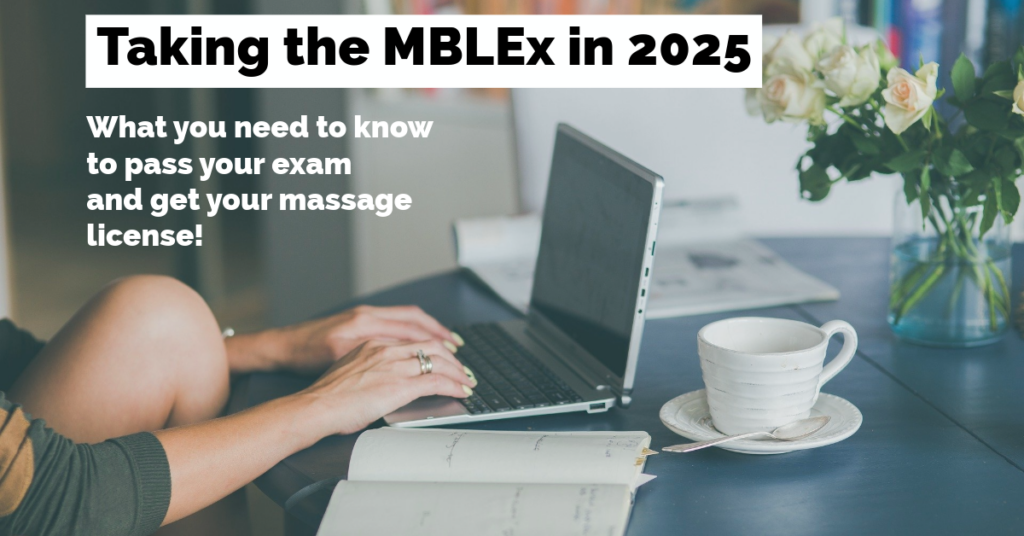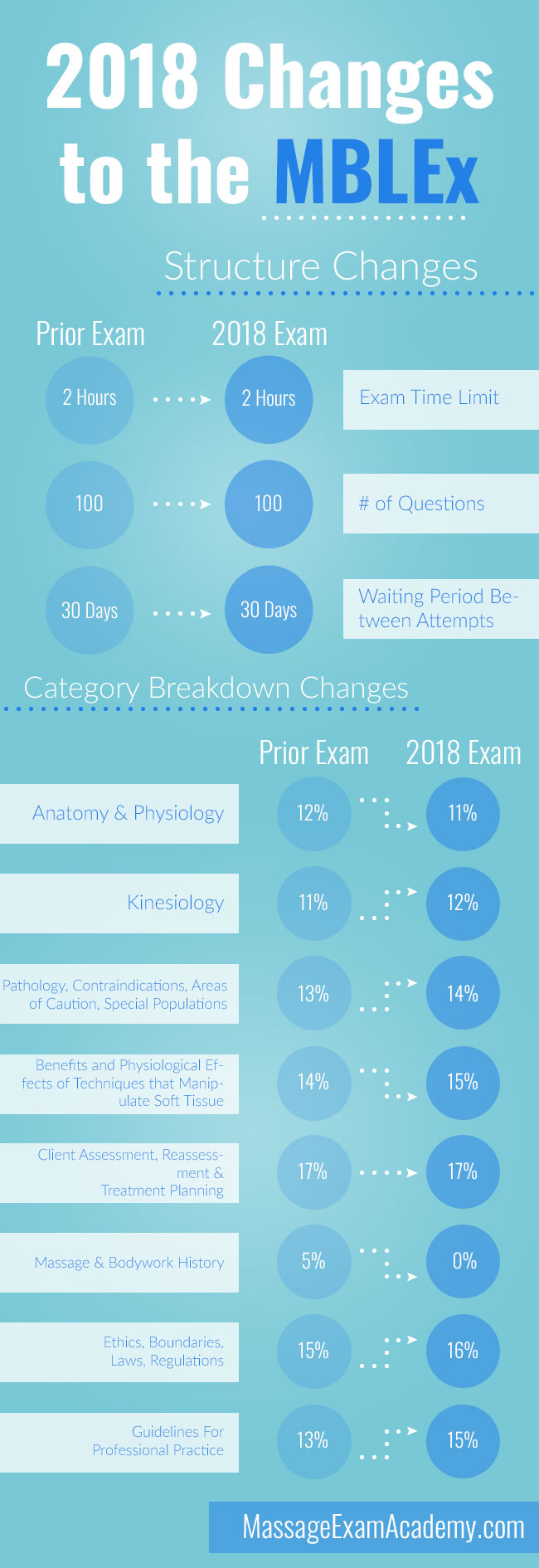
January 1st, 2026 is a new year with fresh beginnings and new goals.
If you are graduating from massage school, moving to a state that requires you to take a licensing exam, or jumping back into the massage profession after a hiatus—you might find yourself in the position of taking the 2026 MBLEx (Remember, the NCETMB is no longer an option).
If passing the 2026 MBLEx and getting licensed are part of your goals for the year, I want to help you get there. To do that, you should know the latest info on exam content, pass rates, and fees. Knowing about the MBLEx is almost as important as knowing what you may be tested on. Don’t worry—we’ll also talk about study guides, practice exams, and where to find those at the end.
Why it’s important to know about exam changes
Massage Exam Academy opened its virtual doors in 2011 to help students pass the MBLEx. Since then, the exam has evolved—and sometimes those updates catch people off guard. Each fall, the FSMTB releases its annual report with pass rates and any exam updates. For 2026, we’re using the most recent report: FSMTB Annual Report 2025 (PDF).
What is the current MBLEx pass rate?
Pass rates from July 2024 through June 2025 are based on 17,160 MBLEx candidates tested. The first-time pass rate was 70.4% according to the latest FSMTB Annual Report.
- First-time test-taker pass rate: 70.4%
This is very close to last year’s figure, showing stable performance overall. The FSMTB hasn’t recently published second-attempt pass rates.
Recent MBLEx changes you should know about
Multiple-choice format
You may see 3-option multiple-choice questions (instead of four). This format has been rolling out for a while and continues for the 2026 MBLEx. Expect a mix of 3- and 4-option items.
MBLEx fee
The fee remains $265 per attempt (first implemented in 2020).
Bonus: Learn exactly WHAT and HOW to study for your exam with my free MBLEx Starter Pack
Massage history is history
The former section “Overview of Massage/Bodywork Modalities, History and Culture” is no longer a separate section. Historical and culture subcategories are not tested. The “Overview of Modalities” content was reassigned under Benefits and Physiological Effects of Techniques that Manipulate Soft Tissue. You still need to know modalities—just not who invented which technique in 1846.
All subjects are not created equally
Current content distribution (percent of exam):
- Anatomy & Physiology – 11%
- Kinesiology – 12%
- Pathology, Contraindications, Areas of Caution, Special Populations – 14%
- Benefits and Physiological Effects of Techniques – 15%
- Client Assessment, Reassessment & Treatment Planning – 17%
- Ethics, Boundaries, Laws & Regulations – 16%
- Guidelines for Professional Practice – 15%
2017 MBLEx changes (still relevant)
These aren’t new, but many test-takers still ask about them:
New MBLEx educational requirement
Effective July 1, 2017, candidates must verify enrollment in, or completion of, a state-approved massage therapy program. See the FSMTB website for details.
No more recommended reading lists
The FSMTB no longer publishes an official recommended reading list. Exam content can come from multiple recognized texts and sources (which was basically true before, too).
Pass/Fail scoring
The MBLEx uses PASS/FAIL scoring—no numeric scores (like 630) are reported. Your score report shows overall result and performance by content area (good, borderline, poor). More on that here.
How can you prepare for the 2026 MBLEx?
Give yourself time to study and prepare
This is a professional licensing exam. Build a study plan before you schedule your date. Leave time for each of the seven content areas and a final review.
Review your texts
Even without an official reading list, your school textbooks are essential references you’ll use in practice. Dust them off and assess what you need to revisit.
Develop your clinical reasoning
Expect applied, case-style questions. Example:
A 16-year-old client reports shoulder pain after a fall three weeks ago. She has pain with shoulder adduction. Which muscle group is most likely involved?
- Teres minor and Pectoralis minor
- Teres major
- Latissimus dorsi and Teres major
- Infraspinatus and Deltoid
Correct answer: C — Both Latissimus dorsi and Teres major adduct the arm.
Review multiple-choice strategy
Two answers might be partly true—but one is most correct. Work through the structure with my tips: Multiple-choice strategy for the MBLEx.
Take practice quizzes and exam simulations
Simulators help with pacing and reduce exam anxiety. Practice quizzes target weak areas. Our “Plan to Pass” helps you find and fix the topics that hold you back.
Start preparing for the 2026 MBLEx
Make 2026 your year! If you’d like to learn more about Massage Exam Academy—MBLEx simulations, practice quizzes, and more—you can do that here. My hope is that taking the 2026 MBLEx leads to positive life and career changes for you.
Source: FSMTB Annual Report 2025 (PDF)



